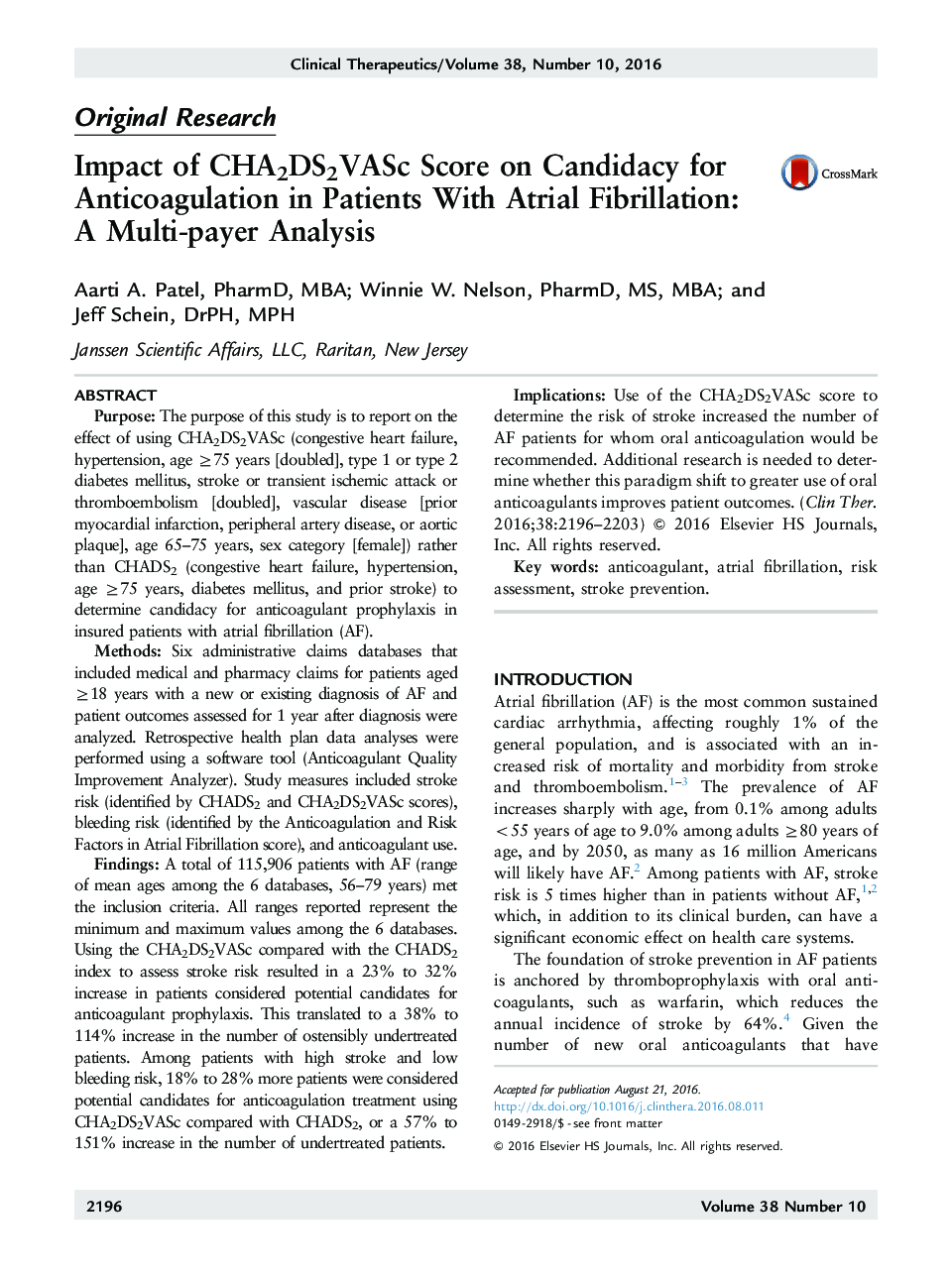| کد مقاله | کد نشریه | سال انتشار | مقاله انگلیسی | نسخه تمام متن |
|---|---|---|---|---|
| 5554197 | 1403026 | 2016 | 13 صفحه PDF | دانلود رایگان |

PurposeThe purpose of this study is to report on the effect of using CHA2DS2VASc (congestive heart failure, hypertension, age â¥75 years [doubled], type 1 or type 2 diabetes mellitus, stroke or transient ischemic attack or thromboembolism [doubled], vascular disease [prior myocardial infarction, peripheral artery disease, or aortic plaque], age 65-75 years, sex category [female]) rather than CHADS2 (congestive heart failure, hypertension, age â¥75 years, diabetes mellitus, and prior stroke) to determine candidacy for anticoagulant prophylaxis in insured patients with atrial fibrillation (AF).MethodsSix administrative claims databases that included medical and pharmacy claims for patients aged â¥18 years with a new or existing diagnosis of AF and patient outcomes assessed for 1 year after diagnosis were analyzed. Retrospective health plan data analyses were performed using a software tool (Anticoagulant Quality Improvement Analyzer). Study measures included stroke risk (identified by CHADS2 and CHA2DS2VASc scores), bleeding risk (identified by the Anticoagulation and Risk Factors in Atrial Fibrillation score), and anticoagulant use.FindingsA total of 115,906 patients with AF (range of mean ages among the 6 databases, 56-79 years) met the inclusion criteria. All ranges reported represent the minimum and maximum values among the 6 databases. Using the CHA2DS2VASc compared with the CHADS2 index to assess stroke risk resulted in a 23% to 32% increase in patients considered potential candidates for anticoagulant prophylaxis. This translated to a 38% to 114% increase in the number of ostensibly undertreated patients. Among patients with high stroke and low bleeding risk, 18% to 28% more patients were considered potential candidates for anticoagulation treatment using CHA2DS2VASc compared with CHADS2, or a 57% to 151% increase in the number of undertreated patients.ImplicationsUse of the CHA2DS2VASc score to determine the risk of stroke increased the number of AF patients for whom oral anticoagulation would be recommended. Additional research is needed to determine whether this paradigm shift to greater use of oral anticoagulants improves patient outcomes.
Journal: Clinical Therapeutics - Volume 38, Issue 10, October 2016, Pages 2196-2203.e5